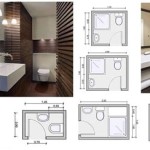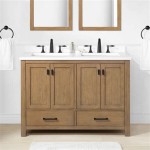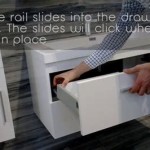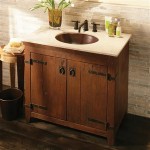Do Conversion Vans Have Bathrooms? A Comprehensive Exploration
The question of whether conversion vans have bathrooms is a common one for individuals considering this type of customized vehicle for travel, recreation, or even full-time living. The answer, however, is not a simple yes or no. The presence of a bathroom in a conversion van depends heavily on the specific van's design, the manufacturer’s intent, the degree of customization, and the overall size of the vehicle. This article will delve into the various factors that influence the existence of bathrooms in conversion vans, exploring the types of bathrooms that might be found and the associated considerations for space, plumbing, and usage.
Conversion vans, by their nature, are vehicles adapted from a standard cargo van platform. This platform is typically a full-size van manufactured by companies like Ford, Mercedes-Benz (Sprinter), Ram, or Chevrolet. The term "conversion" refers to the process of transforming the interior of the van into a more comfortable and functional living space. This conversion can range from simple additions like seating and flooring to elaborate renovations including kitchens, sleeping areas, and, in some cases, bathrooms.
Therefore, the presence of a bathroom is not a standard feature in all conversion vans. Many base models and budget-oriented conversions will prioritize cost savings and maximizing living space by omitting a dedicated bathroom. Conversely, higher-end or custom-built conversion vans often incorporate a bathroom as a key feature to enhance self-sufficiency and convenience for the occupants.
Factors Determining the Presence of a Bathroom
Several factors influence whether a conversion van is equipped with a bathroom. These factors are interconnected and often represent trade-offs in terms of space, cost, and complexity.
First, the size of the van is a primary determinant. Larger vans, such as extended-length Sprinter vans or full-size Ford Transit models, offer more interior volume, making it easier to accommodate a bathroom without significantly compromising other living areas. Smaller vans, on the other hand, may lack the space to comfortably house a bathroom, leading converters to prioritize other amenities.
Second, the intended use of the van plays a significant role. If the van is primarily intended for weekend camping trips or occasional travel, the need for a full bathroom may be less critical. In such cases, users might rely on campground facilities or portable toilet options. However, if the van is meant for extended road trips, full-time living, or situations where access to public restrooms is limited, a bathroom becomes a much more desirable feature.
Third, the budget available for the conversion is a major consideration. Installing a bathroom in a conversion van involves significant costs related to plumbing, water storage, waste disposal, ventilation, and specialized fixtures. These costs can easily add several thousand dollars to the overall conversion price. Therefore, individuals with limited budgets may opt for more basic conversions without bathrooms.
Fourth, the layout and design of the van's interior significantly impact bathroom feasibility. A well-designed layout can efficiently integrate a bathroom into the existing space, minimizing disruption to other areas. Conversely, a poorly planned layout may make it difficult to incorporate a bathroom without creating a cramped or awkward living environment.
Types of Bathrooms Found in Conversion Vans
When a conversion van does include a bathroom, it can take various forms, each with its own advantages and disadvantages. The type of bathroom typically depends on the available space, the intended level of convenience, and the owner's preferences.
One common type is a wet bath. A wet bath is a compact bathroom where the entire space, including the toilet, shower, and sink, is designed to get wet. These bathrooms are typically enclosed with waterproof materials like fiberglass or plastic and incorporate a drain in the floor. Wet baths are space-efficient and relatively simple to clean, but they require everything within the bathroom to be water-resistant. They are a popular choice for smaller conversion vans where space is at a premium.
Another type is a cassette toilet system. This system typically features a small, portable toilet that connects to a removable waste cassette. These toilets are relatively easy to install and require minimal plumbing. They are often paired with a separate sink and showering area, providing a degree of separation between the toilet and other bathroom functions. Cassette toilets offer a good balance of convenience and space efficiency, making them suitable for mid-sized conversion vans. The cassette needs to be manually emptied at designated disposal stations.
Some larger and more luxurious conversion vans may feature a more traditional-style bathroom with a separate toilet, sink, and shower. These bathrooms often resemble those found in small RVs and offer a higher level of privacy and comfort. However, they require significantly more space and plumbing, making them less common in smaller conversion vans.
Finally, it is important to acknowledge the prevalence of ‘hidden’ bathrooms within conversion vans. These may incorporate a pull-out toilet or a shower that utilizes a multi-purpose space. These designs prioritize maximizing space when the bathroom facilities are not actively in use. These kinds of bathrooms require diligent maintenance and are typically custom designed.
Considerations for Bathrooms in Conversion Vans
Regardless of the type of bathroom installed, several important considerations must be addressed to ensure its functionality, safety, and longevity.
Water storage and supply are crucial factors. Conversion vans with bathrooms need a reliable source of fresh water for the sink and shower. This typically involves installing a fresh water tank, a water pump, and associated plumbing lines. The size of the fresh water tank will determine how long the occupants can use the bathroom before refilling, so it should be chosen based on their anticipated water consumption.
Waste water disposal is another critical aspect. Conversion vans with bathrooms must have a system for collecting and disposing of gray water (water from the sink and shower) and black water (water from the toilet). Gray water can be stored in a separate tank and emptied at designated disposal stations. Black water requires more careful handling and typically involves a holding tank or a cassette toilet system. Proper ventilation is essential to prevent odors and maintain air quality within the van. This can be achieved through a combination of vents, fans, and open windows.
Plumbing and electrical systems must be properly installed and maintained. Leaks in the plumbing system can cause water damage and mold growth, while electrical issues can pose a fire hazard. It is essential to use qualified professionals to install and inspect these systems to ensure they meet safety standards. The placement of the bathroom within the conversion van is also important. It should be located in a well-ventilated area and away from sensitive equipment like electronics or wiring. Accessibility is another factor to consider, especially for individuals with mobility limitations. The bathroom should be designed to be easily accessible and usable for all occupants.
Material selection is paramount. Given the limited space and potential for moisture exposure, the materials used in the bathroom should be durable, water-resistant, and easy to clean. Common materials include fiberglass, plastic, stainless steel, and marine-grade plywood. Regular cleaning and maintenance are essential to prevent mold, mildew, and other hygiene-related issues. The bathroom should be cleaned frequently with appropriate cleaning products to maintain its cleanliness and functionality.
Regulatory compliance is also a consideration. Depending on the location and the specific type of conversion van, there may be regulations or guidelines regarding plumbing, electrical, and waste disposal systems. It is important to research and comply with all applicable regulations to avoid potential fines or penalties.

How To Build A Sprinter Van Bathroom The Mountains And Back

12 Camper Vans With Bathrooms Toilet Shower Inspiration For Off Grid Living Van Life Diy Conversion Interior

15 Best Campervans With Bathrooms 2024 Inspiration Guide

How We Go To The Bathroom In Our Campervan Two Roaming Souls

4 Most Common Van Conversion Bathrooms Automotive Designs And Fabrications

Van Conversions Design Baths Porta Potti Toilets Showers

Van Conversion Bathrooms Divine On The Road

15 Best Campervans With Bathrooms 2024 Inspiration Guide

12 Camper Vans With Bathrooms Toilet Shower Inspiration For Off Grid Living Bearfoot Theory

15 Best Campervans With Bathrooms 2024 Inspiration Guide
Related Posts







